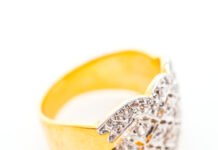In the realm of sports, where every fraction of a second counts, athletes are constantly seeking ways to optimize their performance and gain a competitive edge. Amid the array of high-tech gear and equipment available, one often overlooked yet essential accessory is sports sunglasses.
These seemingly simple shades offer a dual function that extends beyond mere fashion – they enhance athletic performance while safeguarding the eyes from potential harm. In this comprehensive exploration, we delve into the world of sports sunglasses, unveiling their pivotal role in augmenting performance and ensuring eye safety.
Introduction
The fusion of sports and eyewear has significantly evolved over time, resulting in the development of sports sunglasses that are specifically designed to cater to athletes’ unique needs. Beyond fashion statements, these sunglasses have a dual responsibility: enhancing performance and safeguarding the eyes. This dual role sets them apart as an indispensable accessory for athletes across various disciplines.
Performance Enhancement
At the core of sports sunglasses’ appeal is their ability to amplify an athlete’s visual experience. Glare reduction stands as a primary advantage, particularly in outdoor sports. By mitigating the blinding effects of sunlight bouncing off surfaces, sports sunglasses allow athletes to maintain a clear line of vision. This is crucial for activities such as cycling, running, and even water sports where glare can hinder performance and even pose safety risks.
Enhanced contrast and depth perception are additional benefits conferred by quality sports sunglasses. The lenses are carefully crafted to accentuate color differentiation and enhance the perception of depth, enabling athletes to spot nuances in their environment more effectively.
These visual enhancements are particularly advantageous in sports like skiing, where detecting changes in terrain quickly can make the difference between a successful run and a mishap.
Moreover, the inclusion of UV protection in sports sunglasses further bolsters their performance-enhancing capabilities. Prolonged exposure to ultraviolet (UV) rays can not only cause discomfort but also lead to long-term eye damage. Sports sunglasses equipped with UV-blocking technology shield the eyes from these harmful rays, allowing athletes to engage in outdoor activities with greater confidence.
Eye Safety
While performance enhancement is a key focus, the safety aspect of sports sunglasses is equally paramount. In sports where fast-paced movements and unpredictable conditions are the norm, eye protection becomes imperative. Sports sunglasses act as a barrier against airborne debris, dust, and even wind, preventing potential irritants from impeding an athlete’s focus or causing harm.
One of the most critical aspects of eye safety is the prevention of UV-related damage. Prolonged exposure to UV rays can lead to a range of ocular issues, including cataracts, macular degeneration, and photokeratitis (a painful eye condition commonly known as “snow blindness”). The lenses of sports sunglasses act as a shield, filtering out harmful UV rays and safeguarding the delicate structures of the eyes from such damage.
For athletes participating in high-impact sports, such as basketball, soccer, or martial arts, the risk of eye injury is elevated. Sports sunglasses with impact-resistant lenses offer an added layer of protection, minimizing the potential harm caused by accidental collisions or flying objects. This combination of impact resistance and eye safety is vital to ensuring an athlete’s well-being on the field or court.
Lens Technologies
A significant contributor to the versatility and effectiveness of sports sunglasses lies in the advancements in lens technologies. Polarized lenses, for instance, are a game-changer when it comes to glare reduction. By filtering out horizontal light waves that create glare, polarized lenses ensure athletes maintain optimal visibility even in challenging lighting conditions. This technology is particularly favored in water sports, where the reflective surface exacerbates glare.
Photochromic lenses, another noteworthy innovation, adapt to changing light conditions. These lenses darken in response to increased sunlight and lighten when the ambient light decreases. This adaptability eliminates the need for athletes to switch between different eyewear during varying phases of their activity, providing a seamless visual experience.
Mirrored coatings, while adding a touch of style, also offer enhanced protection. The reflective coating reduces the amount of light entering the lenses, effectively reducing glare. This makes mirrored sports sunglasses an excellent choice for outdoor activities under intense sunlight.
Frame Design and Fit
The design and fit of sports sunglasses contribute significantly to their overall functionality and comfort. Lightweight materials are a staple in sports sunglasses construction, ensuring athletes can wear them for extended periods without discomfort. This aspect is particularly critical in endurance sports where the sunglasses are worn throughout the duration of the activity.
Non-slip features integrated into the frame and nose pads prevent the sunglasses from shifting during rigorous movements. This stability is crucial in high-intensity sports where distractions due to ill-fitting eyewear can be detrimental to performance.
Wraparound styles, characterized by lenses that extend to the sides of the face, offer comprehensive coverage. This design not only shields the eyes from glare and wind but also minimizes peripheral distractions, allowing athletes to maintain focus on their performance.
Choosing the Right Sports Sunglasses
Selecting the ideal sports sunglasses involves careful consideration of sport-specific requirements. For instance, cyclists might prioritize aerodynamics and venting to prevent fogging, while snowboarders might need superior UV protection due to increased altitude exposure. Finding the right fit is equally essential – sunglasses that are too loose may fall off during intense activities, while those that are too tight can cause discomfort.
Testing for lens quality and effectiveness is a crucial step in the selection process. Ensuring that the lenses meet industry standards for impact resistance, UV protection, and optical clarity is key to reaping the benefits of sports sunglasses fully.
Conclusion
In the ever-evolving landscape of sports gear, sports sunglasses stand as a vital accessory that bridges the gap between performance enhancement and eye safety. Their ability to reduce glare, enhance contrast, provide UV protection, and shield the eyes from potential harm elevates their significance in the athletic arena. As athletes strive for peak performance, it’s imperative that they recognize the multifaceted advantages of sports sunglasses and prioritize both eye safety and enhanced performance through proper eyewear choices.
Embracing the synergy of technology and sports, athletes can truly experience the benefits of sports sunglasses as they elevate their game while safeguarding their most precious sensory asset – their vision.


















